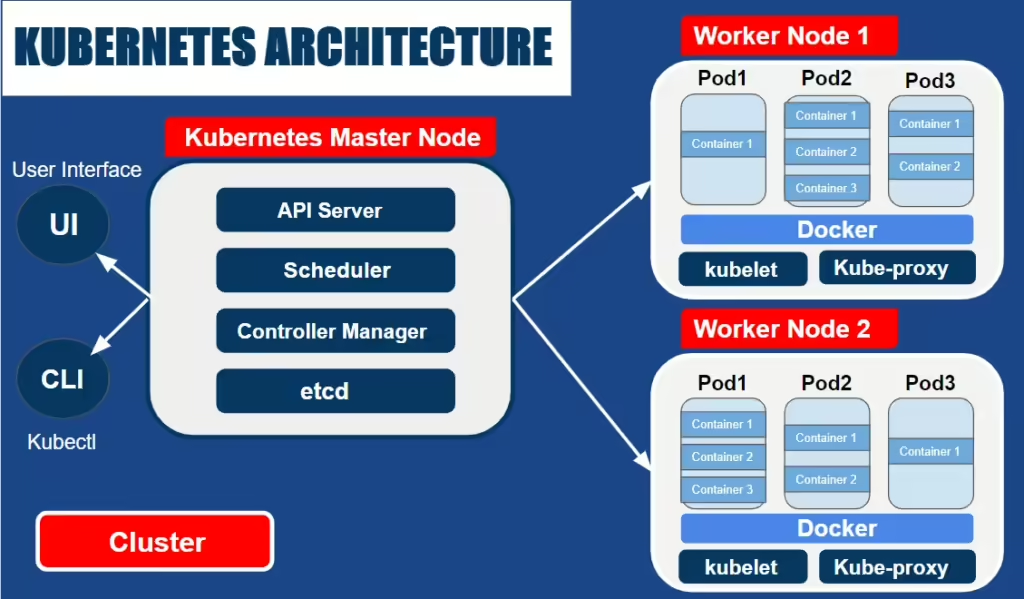If you’ve spent even a little time in the cloud-native or DevOps space, you’ve probably heard of Kubernetes (or K8s for short). It’s the superstar of modern application management, the buzzword that makes developers’ eyes light up—and occasionally makes ops teams groan. But here’s a question I’ve been often asked: “Is Kubernetes a cloud tool, or is it part of DevOps?”
On the surface, it’s a simple question, but peel back the layers, and you’ll find a nuanced debate that ties into how we think about modern software delivery. So, let’s unpack it together! I’ll bring in some history, technical insights, and even a fun example app with YAML. By the end, you’ll have your answer (or at least some good arguments for your next tech debate). Ready? Let’s go!
So the question is “What Exactly Is Kubernetes?“
Let’s start with the basics.
Kubernetes is an open-source platform for orchestrating containers—in simple terms, it manages how your app runs across a cluster of servers. It handles scaling, networking, storage, and more. Think of it like an orchestra conductor, ensuring every instrument (container) plays its part at the right time.
But here’s the twist: Kubernetes is so flexible that it’s hard to pin down. Is it a cloud thing because it abstracts infrastructure? Or is it a DevOps thing because it automates workflows? Hmm… let’s dig deeper.
Introduced by Google in 2014 and later donated to the Cloud Native Computing Foundation (CNCF), Kubernetes is now the de facto standard for container orchestration. Its ability to abstract infrastructure complexities and streamline deployment workflows has led to widespread adoption across industries.
However, a debate lingers: is Kubernetes a cloud technology or a DevOps enabler? While its foundational capabilities align with cloud-native principles, its deep integration with CI/CD pipelines and automation makes it a cornerstone of DevOps practices. This write-up explores this dual identity through a technical lens, offering insights, real-world examples, and practical YAML configurations.
Technical Background
History and Evolution
Kubernetes originated from Google Borg, a proprietary cluster management system, to address the need for efficient scheduling and scaling of containerized workloads. The open-source version of Kubernetes introduced key primitives like Pods, Deployments, and Services, enabling developers to build portable, resilient applications.
With its donation to CNCF in 2015, Kubernetes became the centerpiece of the cloud-native ecosystem. It integrates seamlessly with other CNCF projects such as Helm (package management), Prometheus (monitoring), and Envoy (service mesh), further solidifying its role in both cloud and DevOps paradigms.
Cloud-Native Principles
Kubernetes embodies cloud-native principles by:
- Abstraction: Decoupling applications from underlying hardware.
- Scalability: Auto-scaling workloads based on demand.
- Resilience: Self-healing mechanisms, such as restarting failed containers.
- Portability: Supporting multi-cloud and hybrid deployments.
Read: https://collabnix.com/how-to-become-a-cncf-ambassador/
DevOps Alignment
Kubernetes accelerates DevOps practices by:
- Automation: Simplifying deployments with declarative YAML manifests.
- Integration: Supporting tools like GitOps (e.g., ArgoCD, Flux).
- Microservices: Managing distributed systems efficiently.
- Observability: Providing metrics and logs for continuous feedback loops.
Analysis
Kubernetes as a Cloud Tool
Container Orchestration: Kubernetes excels in managing containerized workloads, a critical feature of cloud-native environments. Its ability to handle multi-node clusters, persistent storage, and network overlays makes it a cloud enabler.
Cloud Integration: Kubernetes integrates deeply with public cloud providers:
- AWS: Elastic Kubernetes Service (EKS) for seamless scaling.
- Azure: Azure Kubernetes Service (AKS) with Azure-native features.
- GCP: Google Kubernetes Engine (GKE), closely aligned with the origins of Kubernetes.
Infrastructure Abstraction: Kubernetes abstracts the complexity of VMs, networks, and storage, making it ideal for multi-cloud strategies.
Kubernetes as a DevOps Enabler

- Automation at Scale: Kubernetes manages deployments, rollbacks, and scaling with minimal human intervention. Features like Horizontal Pod Autoscaler (HPA) and declarative configurations align perfectly with DevOps principles.
- GitOps and IaC: Kubernetes facilitates Infrastructure as Code (IaC) using tools like Helm and Kustomize, allowing version-controlled deployments.
- Pipeline Integration: Kubernetes supports CI/CD pipelines with tools like Jenkins, GitHub Actions, and GitLab CI, streamlining application delivery.
Kubernetes: The Convergence Layer
Kubernetes serves as a convergence layer where cloud and DevOps meet:
- Cloud-like Behavior: Abstracting infrastructure for developers. DevOps Utility: Enabling seamless automation and continuous delivery.
Real-World Example
Let’s demonstrate Kubernetes’ dual role using a sample application: a multi-tier web app with a React frontend, Node.js backend, and MongoDB database.
Application Architecture
- Frontend: React (served via Nginx).
- Backend: Node.js with Express.
- Database: MongoDB.
Deployment YAML Manifests
Namespace Configuration:
apiVersion: v1
kind: Namespace
metadata:
name: web-app
Frontend Deployment:
apiVersion: apps/v1
kind: Deployment
metadata:
name: react-frontend
namespace: web-app
spec:
replicas: 3
selector:
matchLabels:
app: react-frontend
template:
metadata:
labels:
app: react-frontend
spec:
containers:
- name: react-frontend
image: nginx:latest
ports:
- containerPort: 80
volumeMounts:
- name: web-content
mountPath: /usr/share/nginx/html
volumes:
- name: web-content
configMap:
name: react-config
Backend Deployment:
apiVersion: apps/v1
kind: Deployment
metadata:
name: node-backend
namespace: web-app
spec:
replicas: 2
selector:
matchLabels:
app: node-backend
template:
metadata:
labels:
app: node-backend
spec:
containers:
- name: node-backend
image: myregistry/node-backend:latest
ports:
- containerPort: 3000
MongoDB Deployment:
apiVersion: apps/v1
kind: Deployment
metadata:
name: mongodb
namespace: web-app
spec:
replicas: 1
selector:
matchLabels:
app: mongodb
template:
metadata:
labels:
app: mongodb
spec:
containers:
- name: mongodb
image: mongo:4.4
ports:
- containerPort: 27017
volumeMounts:
- name: mongo-data
mountPath: /data/db
volumes:
- name: mongo-data
persistentVolumeClaim:
claimName: mongo-pvc
Conclusion
Kubernetes defies simple categorization. It is both a cloud enabler and a DevOps powerhouse. Its ability to abstract infrastructure complexities while automating deployment processes bridges the gap between these domains.
For cloud architects, Kubernetes offers unparalleled flexibility in managing multi-cloud environments. For DevOps engineers, it serves as a robust platform for CI/CD, GitOps, and IaC practices. Ultimately, Kubernetes embodies the principles of both worlds, making it indispensable in modern software engineering.
References and Further Reading
- Kubernetes Documentation: kubernetes.io
- CNCF Cloud Native Landscape: landscape.cncf.io
- Case Study: GitOps with Kubernetes – ArgoCD Documentation
- Research Paper: “Borg, Omega, and Kubernetes” – Google.
